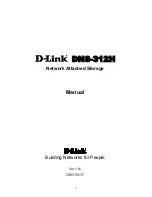
Overview
Data migration is a one-time movement of data from a source to a target. Typical
examples are data center refreshes where data is moved off an old array after which
the array is retired or re-purposed. Data migration is
not data movement due to
replication (where the source data is accessible after the target is created) or data
mobility (where the target is continually updated).
After a data migration operation, applications that access the data must reference the
data at the new location.
To plan a data migration, consider the potential impact on your business, including:
l
Type of data to be migrated
l
Site location(s)
l
Number of systems and applications
l
Amount of data to be moved
l
Business needs and schedules
Data migration solutions for open systems environments
This section explains the data migration features available for open system
environments.
Non-Disruptive Migration overview
Non-Disruptive Migration (NDM) provides a method for migrating data from a source
array to a target array across a metro distance, typically within a data center, without
application host downtime. NDM requires a VMAX array running Enginuity 5876 with
required ePack (source array), and an array running HYPERMAX OS 5977.811.784 or
higher (target array). Consult with Dell EMC for required ePack for source arrays
running Enginuity 5876. In addition, refer to the NDM support matrix available on eLab
Navigator for array operating system version support, host support, and multipathing
support for NDM operations.
If regulatory or business requirements for DR (disaster recovery) dictate the use of
SRDF/S during migration, contact Dell EMC for required ePacks for SRDF/S
configuration.
The NDM operations involved in a typical migration are:
l
Environment setup – Configures source and target array infrastructure for the
migration process.
l
Create – Duplicates the application storage environment from source array to
target array.
l
Cutover – Switches the application data access form the source array to the
target array and duplicates the application data on the source array to the target
array.
l
Commit – Removes application resources from the source array and releases the
resources used for migration. Application permanently runs on the target array.
l
Enviroment remove –Removes the migration infrastructure created by the
environmental setup.
Some key features of NDM are:
Data Migration
166
Product Guide
VMAX 100K, VMAX 200K, VMAX 400K with HYPERMAX OS
Summary of Contents for VMAX 100K
Page 1: ...EMC VMAX3 Family Product Guide VMAX 100K VMAX 200K VMAX 400K with HYPERMAX OS REVISION 6 5 ...
Page 20: ...Preface 20 Product Guide VMAX 100K VMAX 200K VMAX 400K with HYPERMAX OS ...
Page 46: ...VMAX3 with HYPERMAX OS 46 Product Guide VMAX 100K VMAX 200K VMAX 400K with HYPERMAX OS ...
Page 72: ...Open systems features 72 Product Guide VMAX 100K VMAX 200K VMAX 400K with HYPERMAX OS ...
Page 82: ...Provisioning 82 Product Guide VMAX 100K VMAX 200K VMAX 400K with HYPERMAX OS ...
Page 158: ...Remote replication solutions 158 Product Guide VMAX 100K VMAX 200K VMAX 400K with HYPERMAX OS ...
Page 186: ...Mainframe Error Reporting 186 Product Guide VMAX 100K VMAX 200K VMAX 400K with HYPERMAX OS ...
Page 200: ...Licensing 200 Product Guide VMAX 100K VMAX 200K VMAX 400K with HYPERMAX OS ...
















































